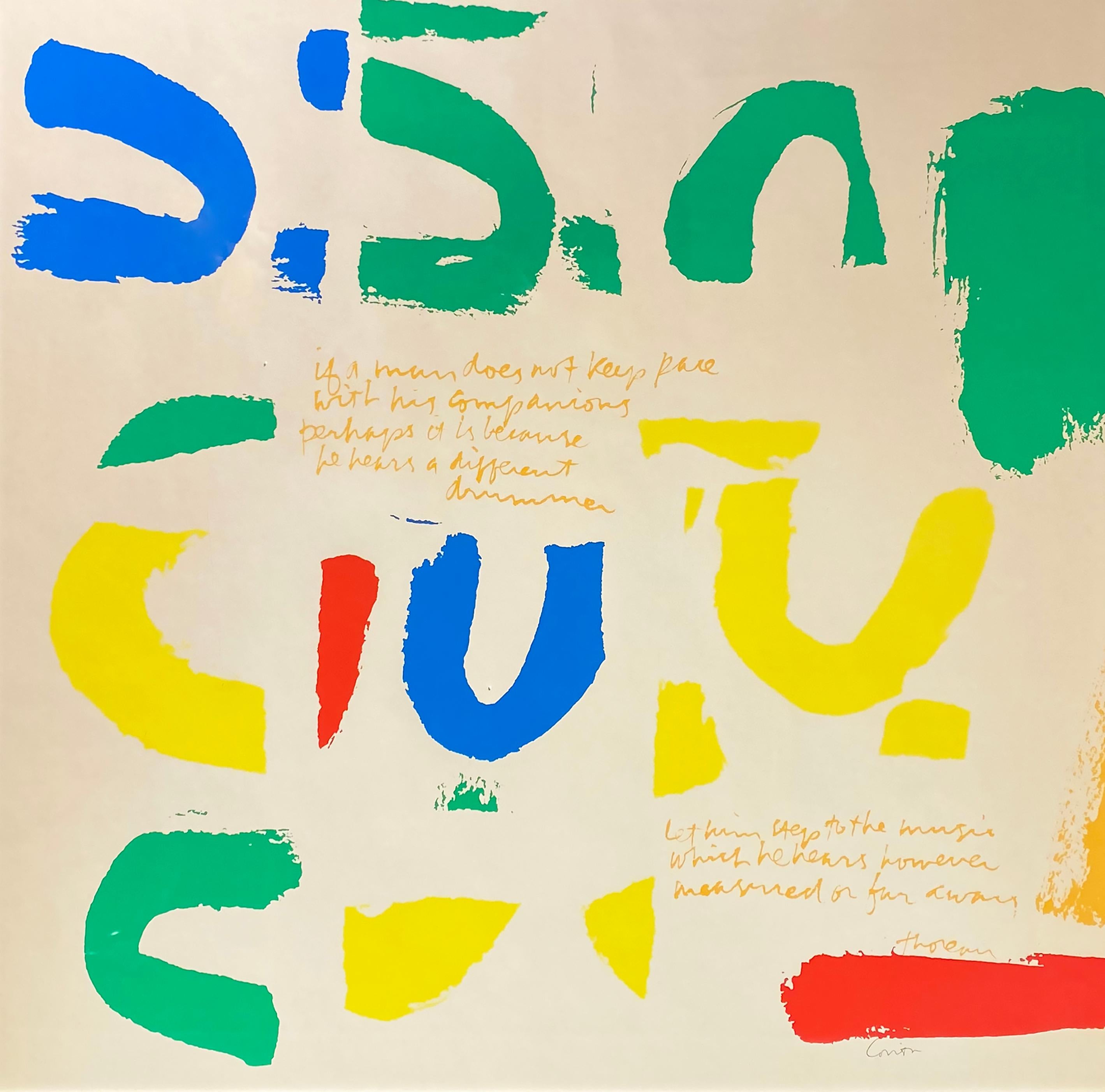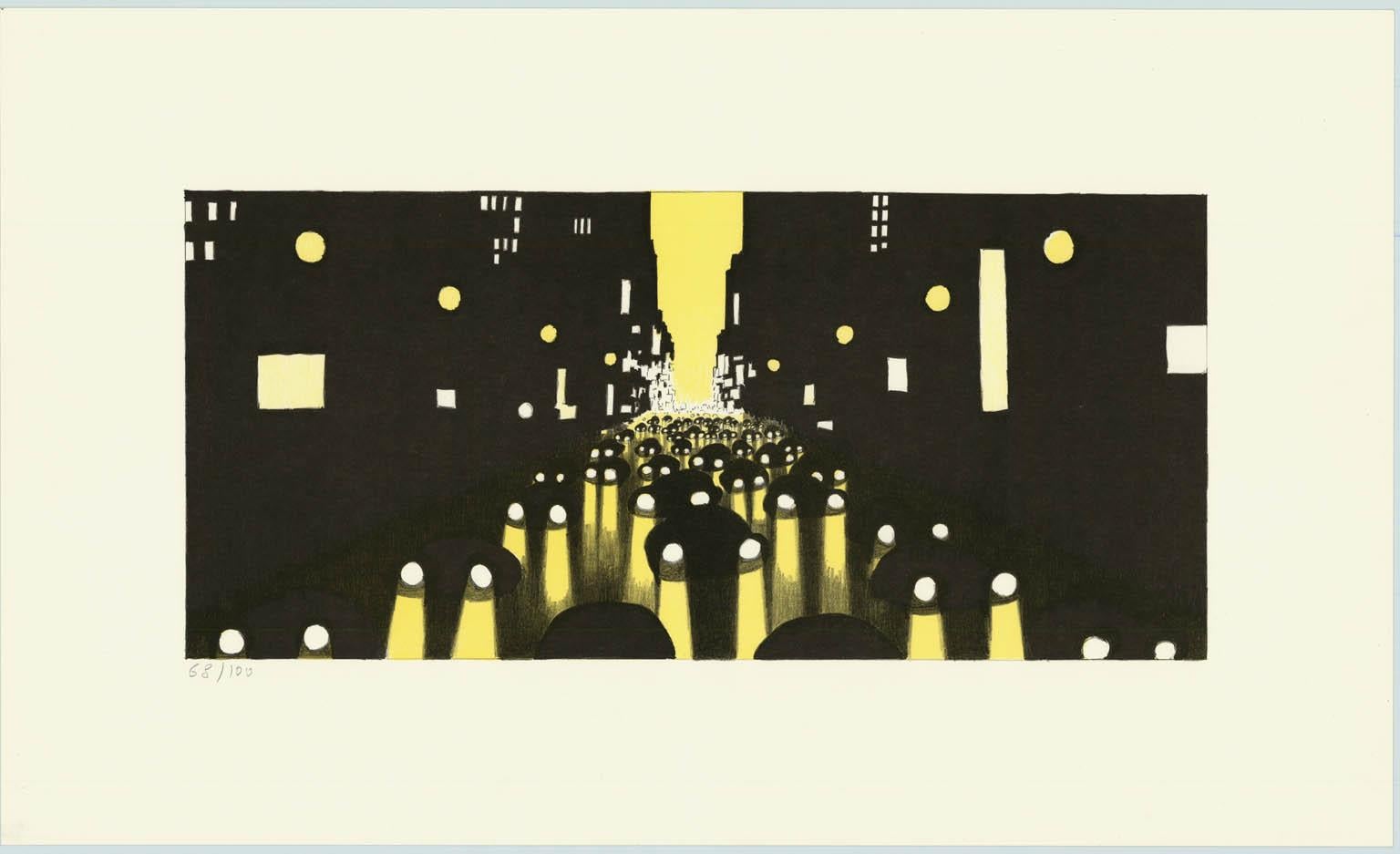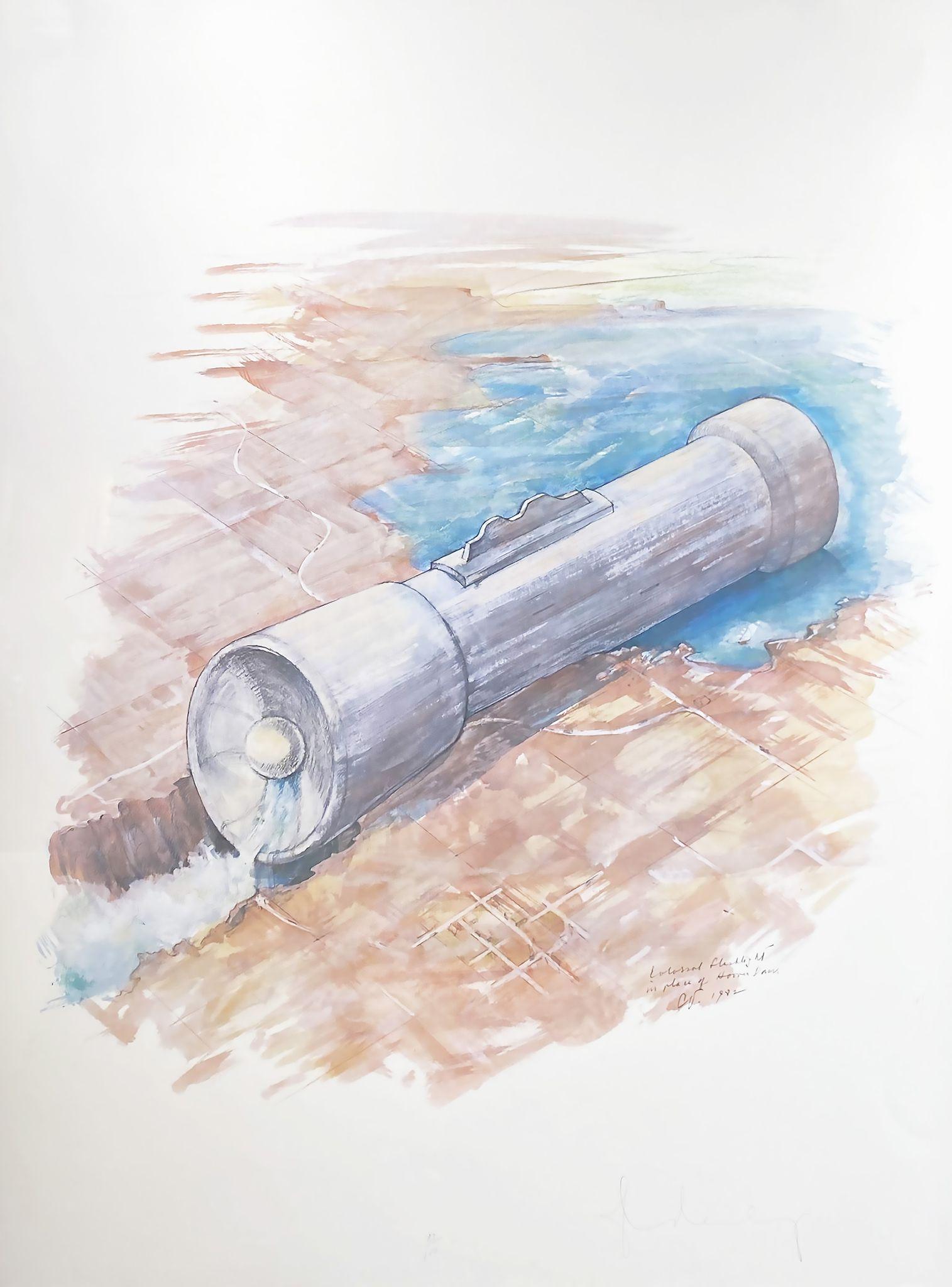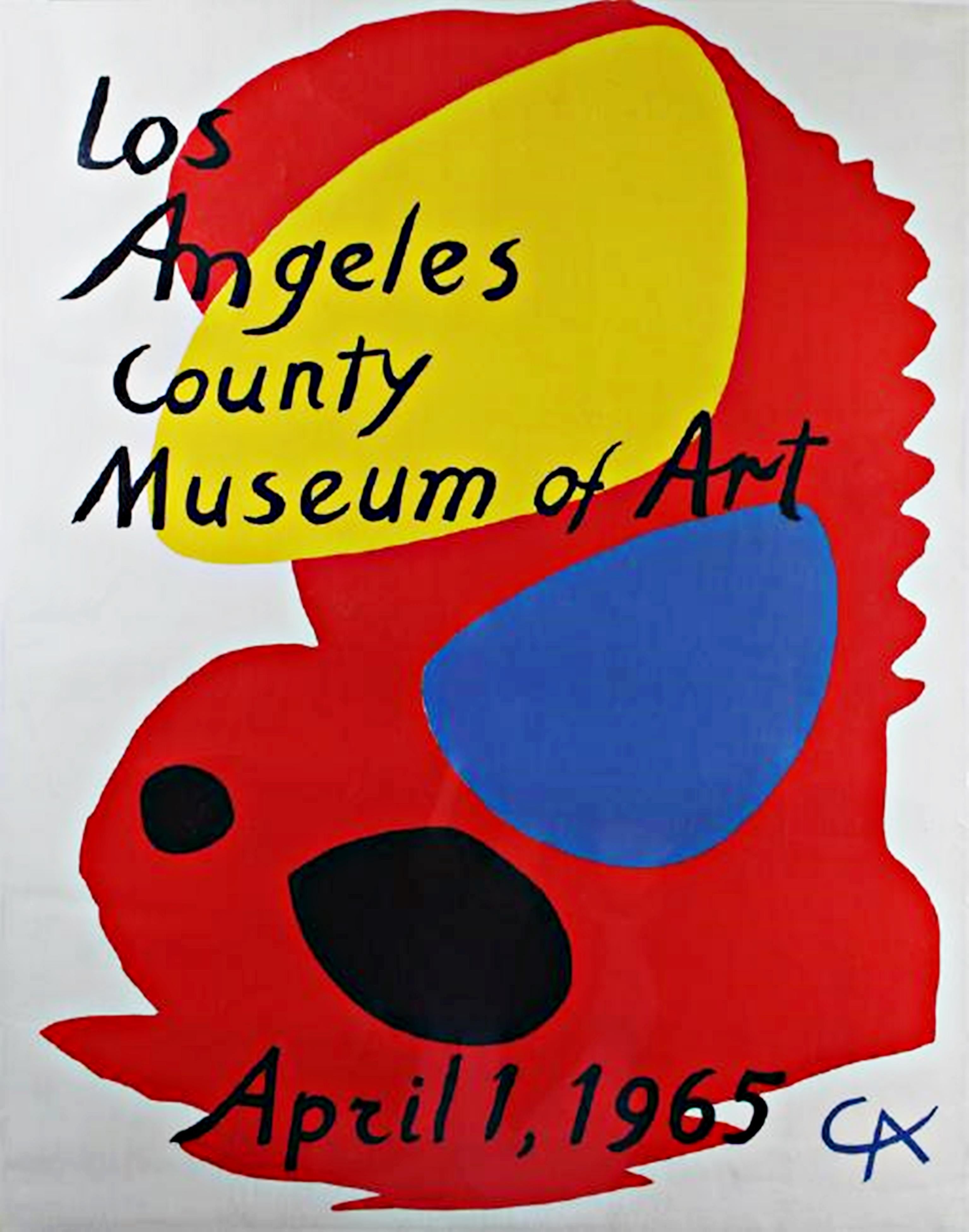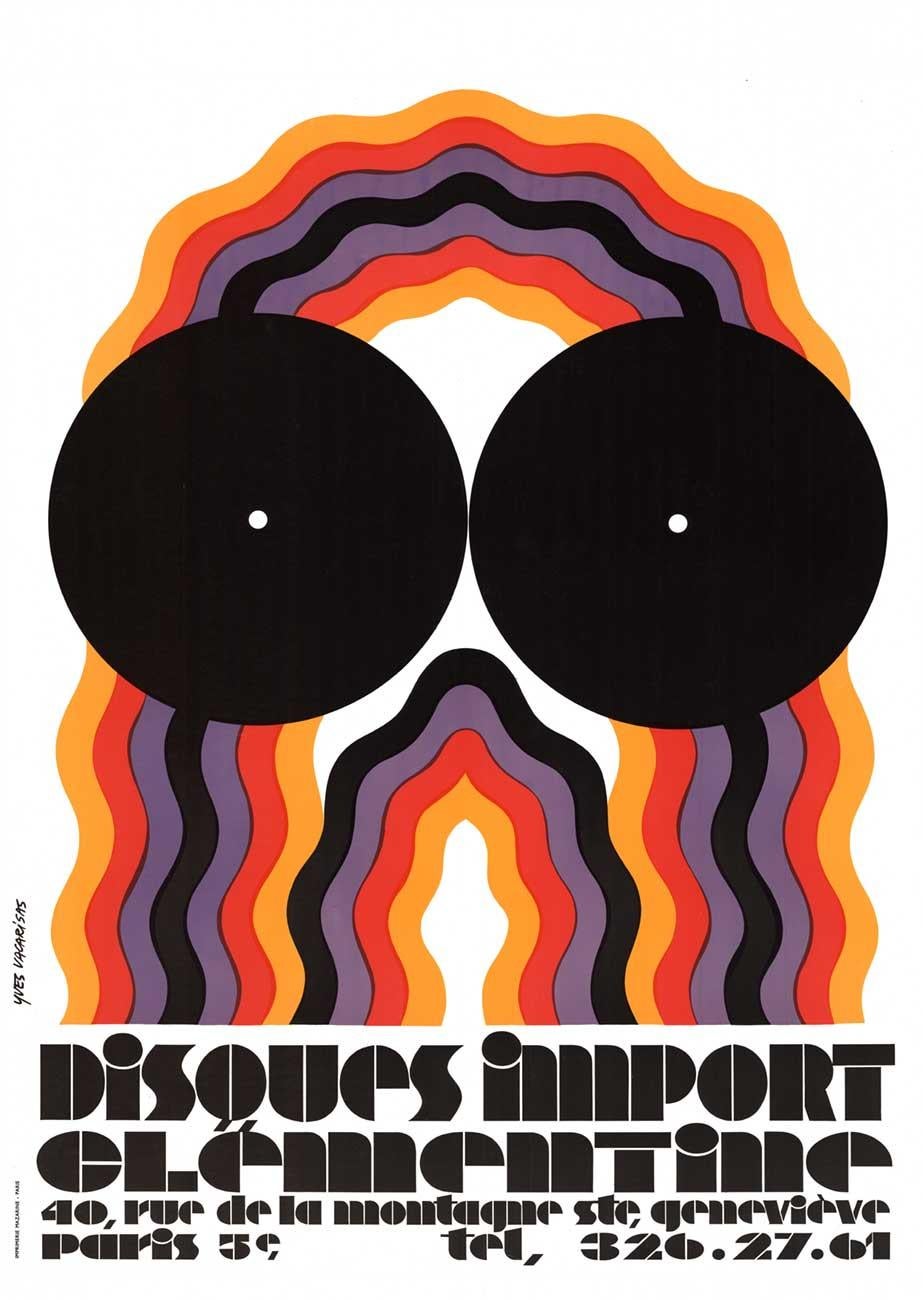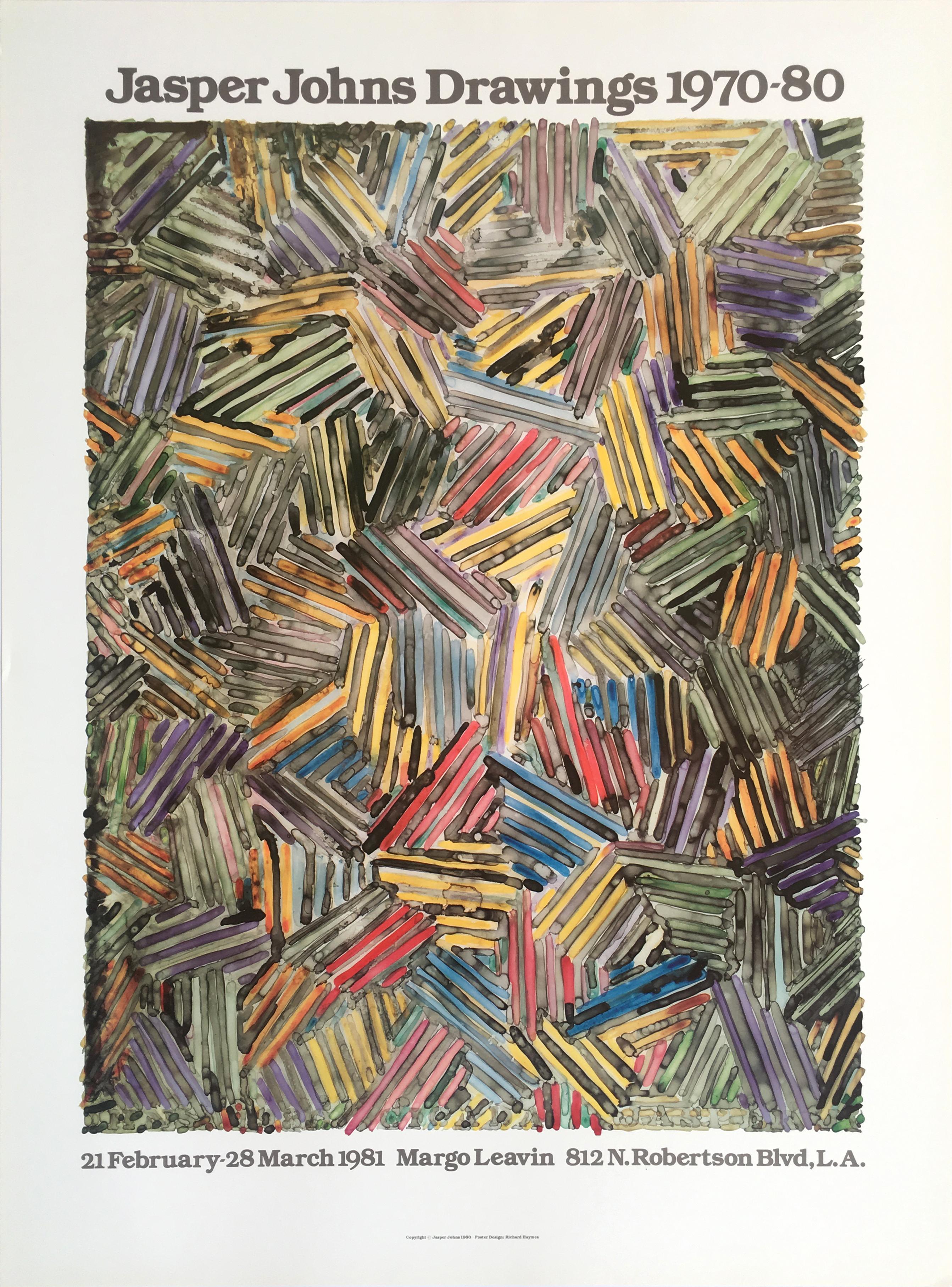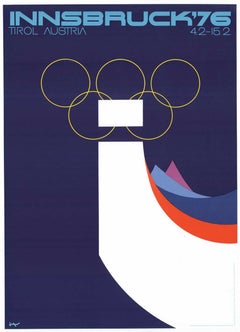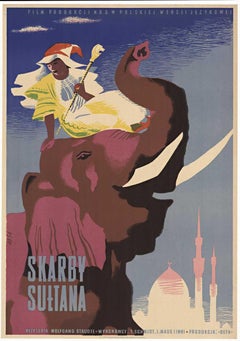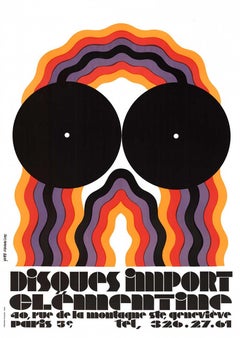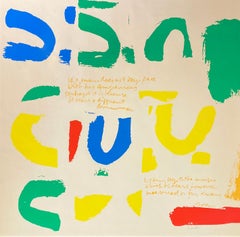
Original Las Vegas Delta Air Lines vintage travel poster linen backed
View Similar Items
Want more images or videos?
Request additional images or videos from the seller
1 of 6
UnknownOriginal Las Vegas Delta Air Lines vintage travel poster linen backed1970s
1970s
About the Item
- Creation Year:1970s
- Dimensions:Height: 28 in (71.12 cm)Width: 22 in (55.88 cm)Depth: 0.05 in (1.27 mm)
- Medium:
- Movement & Style:
- Period:
- Condition:minor edge wear in the fold ink/foil area of the poster linen backed no paper loss bright.
- Gallery Location:Spokane, WA
- Reference Number:Seller: 224481stDibs: LU1404211096792
About the Seller
5.0
Platinum Seller
These expertly vetted sellers are 1stDibs' most experienced sellers and are rated highest by our customers.
Established in 1998
1stDibs seller since 2020
155 sales on 1stDibs
Typical response time: 1 hour
More From This SellerView All
- Original Innsbruck '76 winter Olympic Games vintage posterLocated in Spokane, WAInnsbruck '76 original Olympics posters. Tirol Austria 1976. Winter Games. Original Olympic poster. Linen-backed. Published by Organizat...Category
1970s American Modern Abstract Prints
MaterialsLithograph
- Original Skarby Sultana a.k.a. The Story of Little Muck vintage posterLocated in Spokane, WAOrignial Skarby Sultana vintage poster. A.k.a.The Story of Little Much. Archival linen-backed Very good condition A. Bright and vibrant, lithograph, no stains, no damage, no...Category
1950s American Modern Abstract Prints
MaterialsLithograph
- Original Disques Import Clementine vintage music posterLocated in Spokane, WAOriginal linen-backed vintage poster "DISQUES IMPORT CLEMENTINE". Excellent condition. The image with the psychedelic look of the two records that create the eyes and the rest...Category
1970s Modern Abstract Prints
MaterialsOffset
- Visit Planet Earth via Orbitz original travel posterBy David KleinLocated in Spokane, WALinen backed original contemporary poster Visit Planet Earth created by the artists David Klein and Robert Swanson. This is a take off of the image o...Category
21st Century and Contemporary Abstract Geometric Abstract Prints
MaterialsOffset
- Original Cinquantenaire Aeronautique Bourget, vintage air show posterLocated in Spokane, WAOriginal Cinquantenaire Aeronautique vintage poster. Archival linen backed and ready to frame. Printer: Bedos & Co, Paris. A- condition. (50TH ANNIVERSARY 23E SALON INTERNATIONAL D' AERONAUTICS, JUNE 12 TO 21, 1959 * LE BOURGET AIRPORT.) This mid-century modern original French poster is for an air show...Category
1950s Abstract Geometric Abstract Prints
MaterialsLithograph
- Air France Europe original vintage travel posterBy Jacques Nathan-Garamond 1Located in Spokane, WAOriginal AIR FRANCE EUROPE, Editions Perceval, artist: Jacques Nathan Garamond. Professional acid-free archival linen backed vintage travel post...Category
1960s Expressionist Abstract Prints
MaterialsLithograph
$1,039 Sale Price20% Off
You May Also Like
- Thoreau "If a Man Does Not Keep Peace"By Corita KentLocated in Missouri, MOThoreau "If a Man Does Not Keep Peace" Sister Mary Corita Kent (American, 1918-1986) Signed in Pencil Lower Right 22.5 x 22.5 inches 23.25 x 23.25 inches with frame Sister Mary Cori...Category
20th Century American Modern Abstract Prints
MaterialsColor, Lithograph
Price Upon Request - Leo Baeck "and a Spirit is Characterized"By Corita KentLocated in Missouri, MOLeo Baeck and a Spirit is Characterized Sister Mary Corita Kent (American, 1918-1986) Signed Lower Right in Pencil Edition of 250 Lower center 21.5 x 21.5 inches 24 x 24 inches frame...Category
20th Century American Modern Abstract Prints
MaterialsColor, Lithograph
Price Upon Request - Crosstown TrafficBy Emilio SanchezLocated in New York, NY“Crosstown Traffic” is a color lithograph by Emilio Sanchez. Created in 1998, this impression is unsigned and came to us directly from the Emilio Sanchez Estate (circular estate stam...Category
Late 20th Century American Modern More Prints
MaterialsLithograph
- Colossal Flashlight in Place of Hoover DamBy Claes OldenburgLocated in Missouri, MOColossal Flashlight in Place of Hoover Dam, 1982 By Claes Oldenburg (Swedish, American, 1929-2022) Signed Lower Right Dated Middle Right Unframed: 23" x 22" Framed: 36.5" x 27.5" Whimsical sculpture of pop culture objects, many of them large and out-of-doors, is the signature work of Swedish-born Claes Oldenburg who became one of America's leading Pop Artists. He was born in Stockholm, Sweden. His father was a diplomat, and during Claes' childhood moved his family from Stockholm to a variety of locations including Chicago where the father was general consul of Sweden and where Oldenburg spent most of his childhood. He attended the Latin School of Chicago, and then Yale University where he studied literature and art history, graduating in 1950, the same year Claes became an American citizen. Returning to Chicago, he enrolled at the Art Institute of Chicago from 1952 to 1954 and also worked as a reporter at the City News Bureau. He opened his own studio, and in 1953, some of his satirical drawings were included in his first group show at the Club St. Elmo, Chicago. He also painted at the Oxbow School of Painting in Michigan. In 1956, he moved to New York where he drew and painted while working as a clerk in the art libraries of Cooper-Union Museum for the Arts of Decoration. Selling his first artworks during this time, he earned 25 dollars for five pieces. Oldenburg became friends with numerous artists including Jim Dine, Red Grooms and Allan Kaprow, who with his "Happenings" was especially influential on Oldenburg's interest in environmental art. Another growing interest was soft sculpture, and in 1957, he created a piece later titled Sausage, a free-hanging woman's stocking stuffed with newspaper. In 1959, he had his first one-man show, held at the Judson Gallery at Washington Square. He exhibited wood and newspaper sculpture and painted papier-mache objects. Some viewers of the exhibit commented how refreshing Oldenburg's pieces were in contrast to the Abstract Expressionism, a style which much dominated the art world. During this time, he was influenced by the whimsical work of French artist, Bernard Buffet, and he experimented with materials and images of the junk-filled streets of New York. In 1960, Oldenburg created his first Pop-Art Environments and Happenings in a mock store full of plaster objects. He also did Performances with a cast of colleagues including artists Lucas Samaras, Tom Wesselman, Carolee Schneemann, Oyvind Fahlstrom and Richard Artschwager, dealer Annina Nosei, critic Barbara Rose, and screenwriter Rudy Wurlitzer. His first wife (1960-1970) Pat Muschinski, who sewed many of his early soft sculptures, was a constant performer in his Happenings. This brash, often humorous, approach to art was at great odds with the prevailing sensibility that, by its nature, art dealt with "profound" expressions or ideas. In December 1961, he rented a store on Manhattan's Lower East Side to house "The Store," a month-long installation he had first presented at the Martha Jackson Gallery in New York. This installation was stocked with sculptures roughly in the form of consumer goods. Oldenburg moved to Los Angeles in 1963 "because it was the most opposite thing to New York I could think of". That same year, he conceived AUT OBO DYS, performed in the parking lot of the American Institute of Aeronautics and Astronautics in December 1963. In 1965 he turned his attention to drawings and projects for imaginary outdoor monuments. Initially these monuments took the form of small collages such as a crayon image of a fat, fuzzy teddy bear looming over the grassy fields of New York's Central Park (1965) and Lipsticks in Piccadilly Circus, London (1966). Oldenburg realized his first outdoor public monument in 1967; Placid Civic Monument took the form of a Conceptual performance/action behind the Metropolitan Museum of Art, New York, with a crew of gravediggers digging a 6-by-3-foot rectangular hole in the ground. Many of Oldenburg's large-scale sculptures of mundane objects elicited public ridicule before being embraced as whimsical, insightful, and fun additions to public outdoor art. From the early 1970s Oldenburg concentrated almost exclusively on public commissions. Between 1969 and 1977 Oldenburg had been in a relationship with Hannah Wilke, feminist artist, but in 1977 he married Coosje van Bruggen, a Dutch-American writer and art historian who became collaborator with him on his artwork. He had met her in 1970, when she curated an exhibition for him at the Stedelijk Museum in Amsterdam. Their first collaboration came when Oldenburg was commissioned to rework Trowel I, a 1971 sculpture of an oversize garden tool, for the grounds of the Kröller-Müller Museum in Otterlo, the Netherlands. Oldenburg has officially signed all the work he has done since 1981 with both his own name and van Bruggen's. In 1988, the two created the iconic Spoonbridge and Cherry sculpture for the Walker Art Center in Minneapolis, Minnesota that remains a staple of the Minneapolis Sculpture Garden as well as a classic image of the city. Typewriter Eraser...Category
20th Century American Modern Abstract Prints
MaterialsPaper, Lithograph
Price Upon Request - The original limited edition 1965 Los Angeles County Museum of Art LACMA posterBy Alexander CalderLocated in New York, NYAlexander Calder The original Los Angeles County Museum of Art poster, 1965 Limited Edition vintage Offset Lithograph 32 × 24 3/4 inches 81.3 × 62.9 cm Edition of 300 This is the OR...Category
1960s Modern Abstract Prints
MaterialsLithograph, Offset
- Large Johnny Friedlaender Poster Print No TextBy Johnny FriedlaenderLocated in Surfside, FLJohnny Friedlaender (26 December 1912 – 18 June 1992) was a leading 20th-century artist, whose works have been exhibited in Germany, France, Netherlands, Italy, Japan and the United States. He has been influential upon other notable artists, who were students in his Paris gallery. His preferred medium of aquatint etching is a technically difficult artistic process, of which Friedlaender has been a pioneer. Gotthard Johnny Friedlaender was born in Pless (Pszczyna), Prussian Silesia, as the son of a pharmacist. He was graduated from the Breslau (Wrocław) high school in 1922 and then attended the Academy of Arts (Akademie der Bildenden Kunste) in Breslau, where he studied under Otto Mueller. He graduated from the Academy as a master student in 1928. In 1930 he moved to Dresden where he held exhibitions at the J. Sandel Gallery and at the Dresden Art Museum. He was in Berlin for part of 1933, and then journeyed to Paris. After two years in a Nazi concentration camp, he emigrated to Czechoslovakia, where he settled in Ostrava, where he held the first one-man show of his etchings. In 1936 Friedlaender journeyed to Czechoslovakia, Switzerland, Austria, France and Belgium. At the Hague he held a successful exhibition of etchings and watercolours. He fled to Paris in 1937 as a political refugee of the Nazi regime with his young wife, who was an actress. In that year he held an exhibition of his etchings which included the works: L ‘Equipe and Matieres et Formes. From 1939 to 1943 he was interned in a series of concentration camps, but survived against poor odds. After freedom in 1944 Friedlaender began a series of twelve etchings entitled Images du Malheur with Sagile as his publisher. In the same year he received a commission to illustrate four books by Freres Tharaud of the French Academy. In 1945 he performed work for several newspapers including Cavalcade and Carrefour. In the year 1947 he produced the work Reves Cosmiques and in that same year he became a member of the Salon de Mai, which position he held until 1969. In the year 1948 he began a friendship with the painter Nicolas de Staël and held his first exhibition in Copenhagen at Galerie Birch. The following year he showed for the first time in Galerie La Hune in Paris. After living in Paris for 13 years, Friedlaender became a French citizen in 1950. Friedlaender expanded his geographic scope in 1951 and exhibited in Tokyo in a modern art show. In the same year he was a participant in the XI Trienale in Milan, Italy. By 1953 he had produced works for a one-man show at the Museum of Neuchâtel and exhibited at the Galerie Moers in Amsterdam, the II Camino Gallery in Rome, in São Paulo, Brazil and in Paris. He was a participant of the French Italian Art Conference in Turin, Italy that same year. Friedlaender accepted an international art award in 1957, becoming the recipient of the Biennial Kakamura Prize in Tokyo. In 1959 he received a teaching post awarded by UNESCO at the Museum of Modern Art in Rio de Janeiro. By 1968 Friedlaender was travelling to Puerto Rico, New York City and Washington, D.C. to hold exhibitions. That year he also purchased a home in the Burgundy region of France. 1971 was another year of diverse international travel including shows in Bern, Milan, Paris, Krefeld and again New York. In the latter city he exhibited paintings at the Far Gallery, a venue becoming well known for its patronage of important twentieth-century artists. From his atelier in Paris Friedlaender instructed younger artists who themselves went on to become noteworthy, among them Arthur Luiz Piza, Brigitte Coudrain...Category
Mid-20th Century Modern Abstract Prints
MaterialsOffset, Screen
Recently Viewed
View AllMore Ways To Browse
Retro Neon Lights
Vintage Casino Poster
Vintage Casino Posters
Vintage Vegas Posters
Vintage Vegas Poster
Vintage Vegas Casino
Vintage Vegas Casinos
Delta Vintage
Las Vegas Poster
Las Vegas Vintage Casino
Vintage Las Vegas Casino
Neon Poster
Retro Vegas Poster
Vintage Las Vegas Posters
Retro Casino Posters
Retro Las Vegas Poster
Vintage Gambling
Retro Neon Posters

